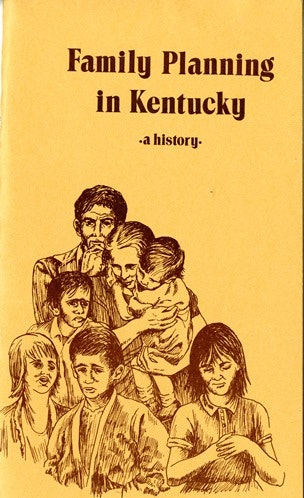KHS Looks into Its Archives for American Archives Month

One of the items in the Kentucky Family Planning Collection is this booklet, circa 1973 or later.
October is American Archives month and as such we felt it was a great time to highlight a couple of archival collections the Kentucky Historical Society holds. The first of those is The Family Planning in Kentucky collection.
A hundred years ago in 1916, Margaret Sanger opened America’s first birth control clinic in New York City to help educate and empower women. Several years later, in 1922, Sanger would propel the birth control movement a step further by establishing the American Birth Control League (which would eventually become Planned Parenthood). The organization focused on helping women assert their reproductive rights through education and to fight against the anti-contraceptive laws that were in place, with particular focus on the Comstock laws.
Jean B. Tachau established the Kentucky Birth Control League (KBCL) in Louisville, Kentucky, in 1933. Modeled after the American Birth Control League, the KBCL opened its first clinic at Norton Infirmary. Thus, the birth control movement became active in Kentucky. Later in the 1940s the KBCL, following the national birth control organization, became Planned Parenthood of Kentucky.[1]
In 1999, the Kentucky Commission donated the Family planning in Kentucky collection (FPK) to the Kentucky Historical Society. The collection affords researchers the opportunity to directly look at the papers of the Kentucky Birth Control League and Jean B. Tachau. The collection includes:
- The papers of Jean B. Tachau and others involved in the Kentucky Birth Control League from its inception in 1933 to 1945
- Newspaper clippings from the 1950s to 1987
- Correspondence from KBCL leaders, including Tachau, to community members who wanted information about contraceptives
- Notes by KBCL field workers who regularly visited doctors, nurses, health department officials and recorded their attitudes toward birth control. (The notes also include the contraceptive supplies the doctor’s ordered. From the mid-1930s to 1945 KBCL field workers visited 63 counties in Kentucky, reaching from Calloway County in Western Kentucky to Fleming County in Eastern Kentucky.)
The collection has particular strengths in discussion of women’s and reproductive rights, tactics of the KBCL, relationship between the KBCL and the general and medical communities and birth control methods. To a smaller extent the collection also discusses or references race and sterilization/eugenics. Through it, researchers can see how the birth control movement in Kentucky mirrored or diverged from the national birth control movement. Moreover, the collection is a vital resource for researchers to explore how, when and why the birth control movement in Kentucky excelled or stalled.
[1] As of 2013 the Kentucky and Indiana Planned Parenthood organization have merged to become the Planned Parenthood of Kentucky and Indiana.
